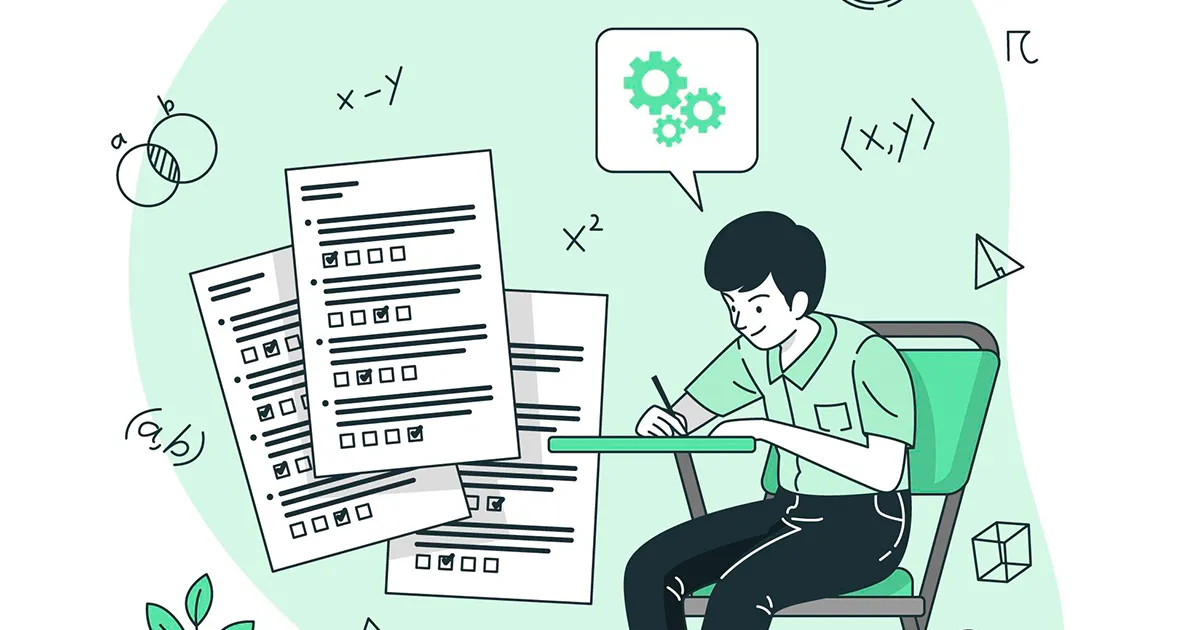
Understanding the Exam Pattern: A Guide to Better Preparation As aspirants, one of the biggest challenges we face is preparing…

As we all know, competitive exams are the stepping stones for fulfilling our dreams and achieving our goals. Whether it is cracking an entrance exam for a prestigious university or clearing a government job exam, the preparation for these exams can be a daunting task. However, it is not just about studying hard and putting in long hours of preparation. The key to success in any competitive exam lies in understanding the exam pattern and tailoring your preparation strategy accordingly.
For every aspirant preparing for a competitive exam, it is crucial to have a clear understanding of the exam pattern. This not only helps in better preparation but also reduces the stress and anxiety associated with exams. In this blog, we will take a comprehensive look at the importance of understanding the exam pattern and provide a guide to help aspirants prepare better.
Before we dive into the details of understanding the exam pattern, let us first understand why it is essential. The exam pattern provides a blueprint of the questions and the format in which they will be asked in the exam. It gives an idea of the marking scheme, the number of questions, and the time duration of the exam. By understanding the exam pattern, aspirants can plan their preparation strategy accordingly, saving time and effort.
Now, let’s understand how you can use the knowledge of the exam pattern to enhance your preparation for the competitive exams.
1. Familiarize Yourself with the Pattern:
The first step towards better preparation is to make yourself familiar with the exam pattern. You can refer to the official website of the conducting body or the study material for the exam to get detailed information about the pattern. Take note of the number of sections, the types of questions asked, and the marking scheme.
2. Plan a Study Schedule:
Once you are aware of the exam pattern, it’s time to make a study schedule. Divide your time based on the number of sections and the weightage of each section. Make sure to allocate more time to the sections with higher marks weightage. Also, consider your strengths and weaknesses while making the schedule.
3. Prioritize According to the Pattern:
The exam pattern will also give you an idea of the difficulty level of the questions. It is advisable to start with the easier sections and then move on to the difficult ones. This will help you build confidence and momentum for the exam.
4. Practice with Mock Tests:
Mock tests are an excellent way to gauge your understanding and preparation level. By practicing with mock tests, you will get familiar with the exam pattern, and you can also identify your weak areas. Make sure to take the mock tests in a simulated environment to get an actual feel of the exam day.
5. Master Time Management:
Time management is crucial when it comes to competitive exams. By knowing the exam pattern, you can plan the time you need to spend on each section. Make sure to stick to the allotted time, and if you are unable to solve a question within the timeframe, move on to the next one. This will help you attempt all the questions and maximize your score.
1. Read the Exam Notification Carefully: The first step to understanding the exam pattern is to read the exam notification carefully. It contains all the important information like the sections, marking scheme, time duration, and syllabus. Make sure to read it thoroughly and note down the key points.
2. Analyze Previous Year Papers: The best way to understand the exam pattern is to analyze previous year papers. This will give a clear idea of the type of questions asked, difficulty level, and importance of different sections. Candidates can also access the official mock tests provided by the exam conducting authorities.
3. Understand the Marking Scheme: Marking scheme is an important aspect of any competitive exam. It gives an understanding of how the marks are distributed among different sections and the value of each question. Make sure to read the marking scheme carefully and plan your attempts accordingly.
4. Know the Level of Difficulty: It is important to know the level of difficulty of the exam. This will help in preparing mentally and dedicating more time to the difficult sections. Some exams have a moderate difficulty level, while others are known to be more challenging. Understanding this will help in better planning and preparation.
5. Identify Important Topics: By analyzing previous year papers, candidates can identify the important topics for the exam. Make sure to focus on these topics and give them more attention during preparation. However, do not neglect the other topics as they might also hold importance in the exam.
6. Plan Your Preparation Strategy: Once you have a clear understanding of the exam pattern, it is time to plan your preparation strategy. Set realistic goals and divide your study time according to the number of sections and their weightage. Make sure to allocate more time to the topics you find difficult and revise them frequently.
7. Stay Updated: It is important to stay updated with any changes in the exam pattern. Keep a regular check on the official website or notifications to be aware of any updates. Ignoring these changes can lead to confusion on the exam day and affect your performance.
Understanding the exam pattern is crucial for any aspirant preparing for competitive exams. It not only helps in better preparation but also reduces stress and improves confidence. Candidates must do thorough research and analyze previous year papers to have a clear understanding of the exam pattern. With a proper study plan and strategy, along with regular practice, success in any competitive exam is achievable. Remember, a well-prepared candidate is always one step ahead of the competition. So, put in the hard work, stay focused, and crack that exam with flying colors!

Understanding the Exam Pattern: A Guide to Better Preparation As aspirants, one of the biggest challenges we face is preparing…

Key Time-Saving Tips for Answering Competitive Exam Questions As the competition for various competitive exams continues to increase, it has…

How to Stay Motivated During Long-Term Exam Preparation Exam preparation can be a demanding and stressful time. The constant pressure…

Building a Study Schedule That Works for You: Tips and Tricks Building a study schedule is a crucial element in…

The Power of Mock Tests in Boosting Your Exam Performance The dreaded exam season is here again and students everywhere…

Navigating Stress and Anxiety: Wellness Tips for Exam Candidates As exam approaches, it is natural to experience feelings of stress…
& stay ahead of your competitors!
* Subscribe to our email newsletter to get the latest posts delivered right to your email.